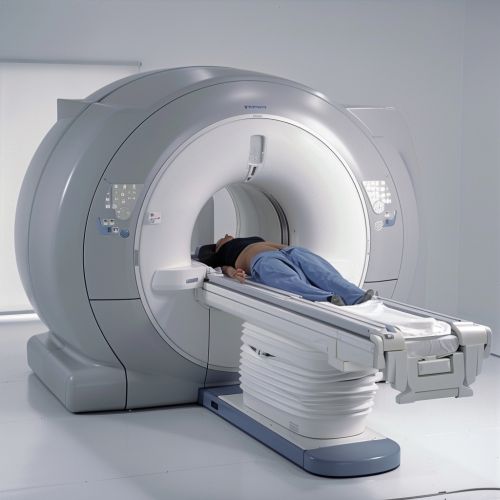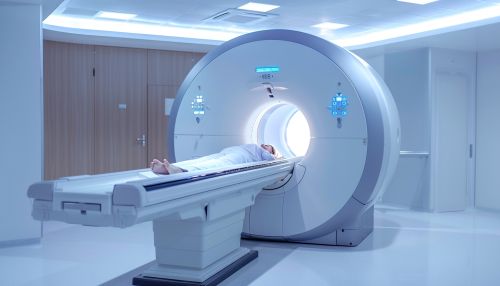Real-time fMRI
Introduction
Real-time functional magnetic resonance imaging (rt-fMRI) is a neuroimaging technique that allows the visualization and measurement of changes in blood oxygenation and flow that occur in response to neural activity. This method is based on the principle of BOLD contrast, which is a type of signal used in fMRI that provides a measure of the relative concentration of deoxyhemoglobin in the blood within the brain.
Principles of Real-time fMRI
The basic principle of rt-fMRI involves the measurement of blood oxygenation levels in the brain. When a specific region of the brain is activated, there is an increase in the metabolic demand of the neurons in that area. This leads to an increase in the flow of oxygenated blood to that region, which can be detected by fMRI. The BOLD signal is used to map these changes in blood flow and oxygenation, providing a measure of neural activity.
The real-time aspect of this technique refers to the ability to observe these changes in neural activity as they occur. This is achieved through rapid image acquisition and processing, which allows the data to be visualized and analyzed in near real-time. This enables researchers to monitor brain activity during tasks or interventions, providing immediate feedback that can be used to adapt the experiment or treatment in response to the observed changes in brain activity.


Applications
Real-time fMRI has a wide range of applications in both research and clinical settings. In research, it is used to study the neural correlates of cognition, emotion, and behavior. It can also be used to investigate the effects of various interventions, such as pharmacological treatments or cognitive therapies, on brain activity.
In clinical settings, rt-fMRI can be used for pre-surgical planning and intraoperative guidance. By mapping the functional areas of the brain, surgeons can plan their approach to minimize damage to critical areas. During surgery, rt-fMRI can be used to monitor changes in brain activity, providing immediate feedback that can guide the surgical procedure.
Another promising application of rt-fMRI is in neurofeedback therapy. This involves training individuals to regulate their own brain activity based on feedback from rt-fMRI. This approach has been used to treat a variety of conditions, including depression, anxiety, and attention deficit hyperactivity disorder (ADHD).
Advantages and Limitations
One of the main advantages of rt-fMRI is its ability to provide a non-invasive measure of brain activity. Unlike other neuroimaging techniques, such as positron emission tomography (PET), rt-fMRI does not involve the use of radioactive tracers. This makes it a safer option for repeated measurements and long-term studies.
Another advantage is the high spatial resolution of fMRI, which allows for detailed mapping of brain activity. This is particularly useful in research studies investigating the neural basis of cognitive processes, as well as in clinical applications where precise localization of brain activity is required.
However, rt-fMRI also has several limitations. One of the main limitations is the indirect nature of the BOLD signal. While this signal provides a measure of changes in blood flow and oxygenation, it does not directly measure neural activity. This can make the interpretation of fMRI data complex and requires careful experimental design and analysis.
Another limitation is the relatively low temporal resolution of fMRI. While the real-time aspect of rt-fMRI allows for near-instantaneous visualization of changes in brain activity, the actual time resolution of the technique is limited by the hemodynamic response, which is on the order of seconds. This makes it less suitable for studying fast neural processes.
Future Directions
Despite these limitations, rt-fMRI continues to be a valuable tool in neuroscience research and clinical practice. Ongoing advancements in fMRI technology and data analysis methods are expected to further improve the temporal and spatial resolution of the technique, as well as the accuracy and reliability of the BOLD signal.
One promising area of development is the integration of rt-fMRI with other neuroimaging techniques, such as electroencephalography (EEG) and magnetoencephalography (MEG). These techniques provide direct measures of neural activity with high temporal resolution, and their combination with rt-fMRI could provide a more comprehensive view of brain function.
Another area of interest is the application of machine learning algorithms to rt-fMRI data. These algorithms can be used to decode the patterns of brain activity associated with specific cognitive states or behaviors, providing insights into the neural code.
